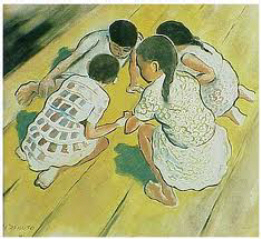What can I expect at the first appointment?
The first appointment is a time for you to get to know me and for me to get to know you. My goals for a first session are to help you feel comfortable being here, to learn about what brings you to therapy, and to answer any questions you may have about how I work. Sometimes people who come in have been carrying around their thoughts and feelings for a long time and know exactly what they'd like to say. Other people have a hard time knowing what to say and need questions and encouragement. I am comfortable either following your lead or asking guiding questions if needed. At the end of the first session, we will discuss scheduling another appointment and how often you should come in.
What if I have relationship problems but my partner doesn't want to come in?
This is a common problem I see with couples, and there are two ways to handle this. The first is to ask if your partner is willing to come in for a set number of sessions, from 1-3, just to meet and see if they feel it could be helpful in any way. Often people are afraid of therapy, seeing it as some mystical process. Meeting face-to-face can help people feel more comfortable. Or your partner can reach me by phone and ask questions before agreeing to come in. The second way, if your partner flat-out refuses to come in, is to begin individual therapy to work on your own issues. Frequently, if one member of a couple is benefiting from therapy, the couple relationship changes also, or the partner decides they are now ready to participate.
What is sand play therapy?
Sand play therapy is a process by which people use an extensive collection of figures and objects along with a tray of sand to create a three-dimensional picture or image. Having this visual expression can be very productive in expanding communication beyond what can be expressed with words alone. Sometimes people use the sand and figures to create a single sand tray image to help them convey a specific feeling or theme, and sometimes people create sand trays regularly to deepen the process of therapy. Although sand tray therapy is available in my office and I offer it to the clients I see, I never "make" people use it if it's not desired or comfortable. I find that sand tray therapy works particularly well in cases when a person feels "stuck" using only words, when physical symptoms are part of the presenting problem, when a person experienced trauma at an early age, and/or when a person wishes to tap into unconscious material. It is useful with people of all ages.
Why play therapy for children?
My office is set up to provide children with the space to play and create art. I use play therapy with children because play is their language and they naturally express themselves symbolically through play. Children rarely come in and want to "talk" about their problems. Through play I can learn about their world view and can offer interventions during play that will help the child see themselves differently and cope in a more effective way. I typically suggest play therapy with children age 10 and younger. Older children may want to play as well, or to do a combination of play and talk.
How long do I need to come to therapy?
That is going to vary quite a bit depending on the nature of what brings you in and the length and severity of symptoms. Another factor is your level of motivation. The benefits of therapy appear more rapidly if you are actively working on your goals, both in and out of sessions. How long therapy lasts also depends on your goals. Many people experience symptom relief and more effective coping after several months, but if you're looking for permanent and deep-seated change, you will likely need to be in therapy for a longer period of time.
Can you bill my health insurance?
Many health insurance companies DO cover psychotherapy, but the amount you are expected to contribute and the allowed number of sessions vary. It is best to check with your health insurance company about benefits before you attend a first appointment. I am a preferred provider for several health insurance companies, including but not limited to Anthem Blue Cross, Beacon Health, and the Humboldt-Del Norte IPA. In addition, I am able to take Victim Witness funding. If you do not have health insurance or do not want to use it for therapy, you may pay me privately. My fee is $130.00 for individual and couples therapy and $160.00 for an initial assessment.




